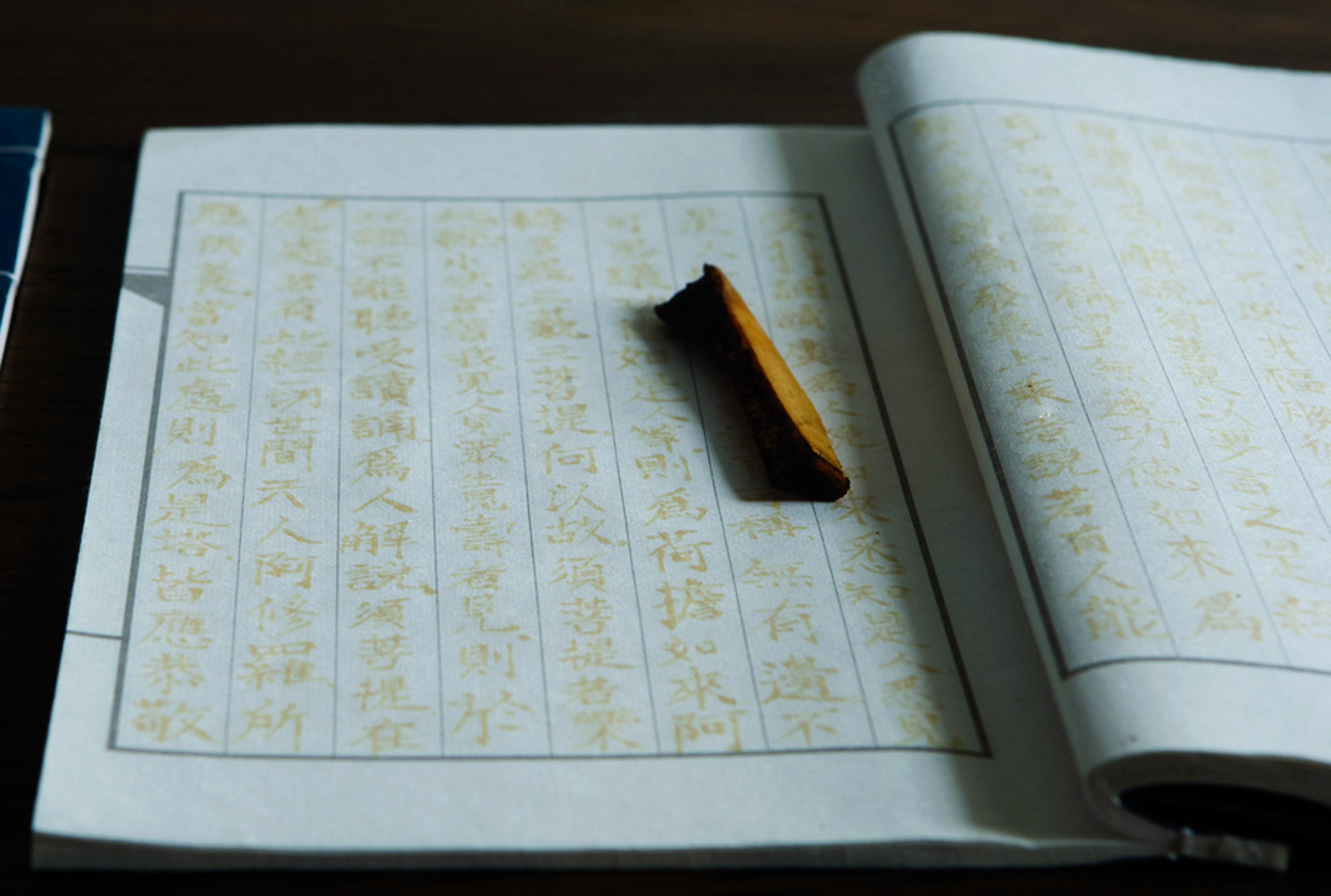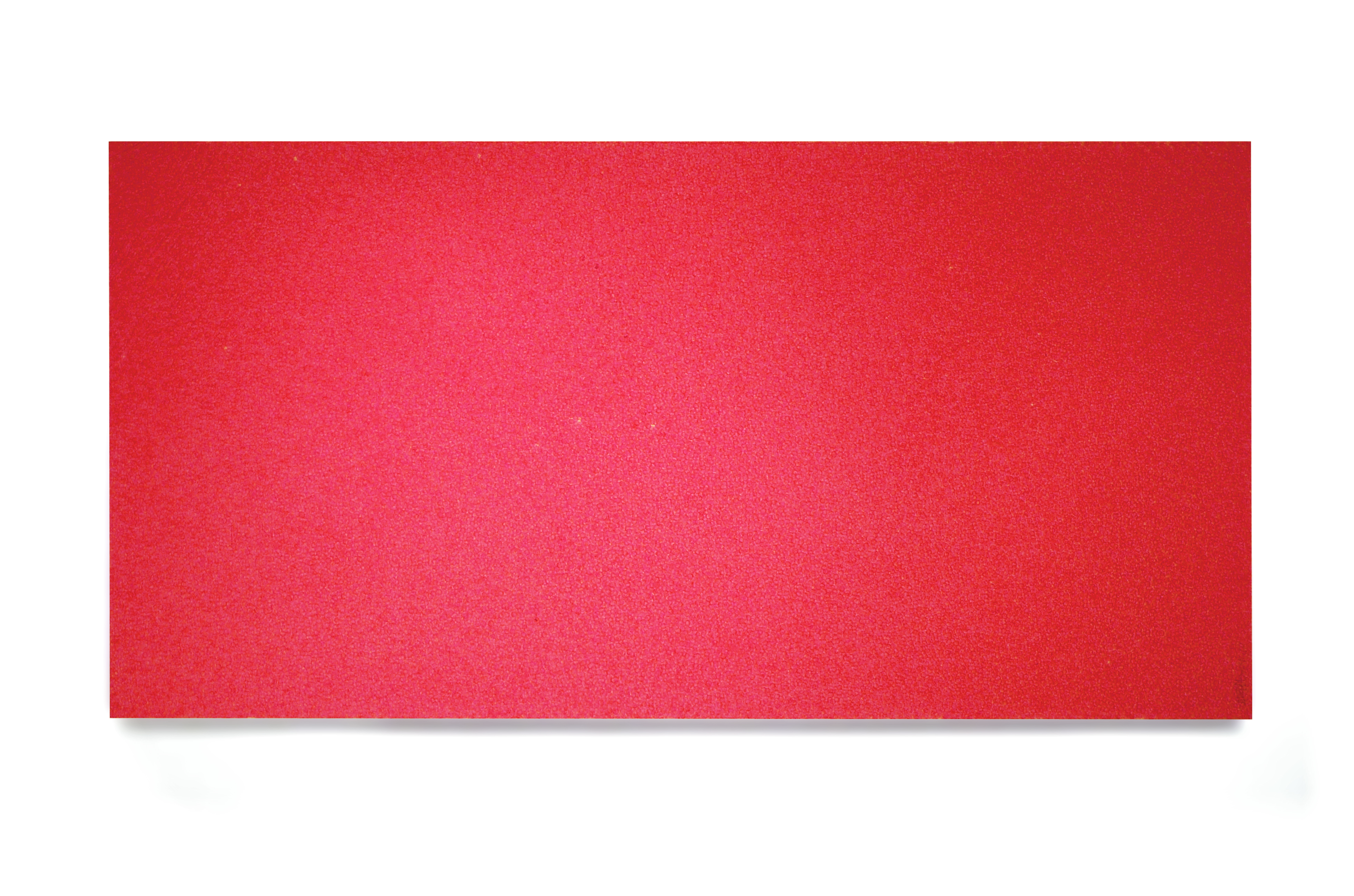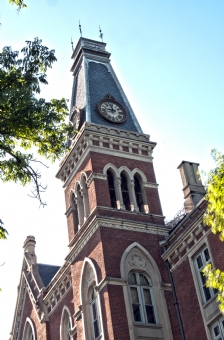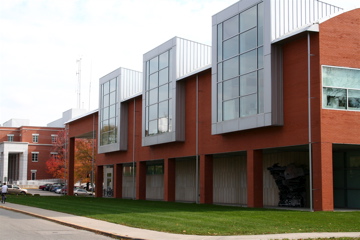Mind Space: Maximalism in Contrasts at Peeler Art Center, September 7 - December 7
September 6, 2012
 Mind Space: Maximalism in Contrasts, an exhibition of mixed media installations portraying a new realm of artistic expression through exploration of the conceptual space inside the artists’ minds, will be on display at DePauw University, September 7 through December 7. The public is invited to view the exhibition, which is presented free of admission charge, at DePauw's Richard E. Peeler Art Center. (at right: He Xiangyu, Coca-Cola Project - Handwritten Copy, 2009, Coca-Cola, handwritten copy of Diamond Sutra on paper, bones; courtesy of Pearl Lam Galleries, Shanghai, China)
Mind Space: Maximalism in Contrasts, an exhibition of mixed media installations portraying a new realm of artistic expression through exploration of the conceptual space inside the artists’ minds, will be on display at DePauw University, September 7 through December 7. The public is invited to view the exhibition, which is presented free of admission charge, at DePauw's Richard E. Peeler Art Center. (at right: He Xiangyu, Coca-Cola Project - Handwritten Copy, 2009, Coca-Cola, handwritten copy of Diamond Sutra on paper, bones; courtesy of Pearl Lam Galleries, Shanghai, China)
Composed of ten installations and 30 wall-hung pieces, Mind Space introduces four Chinese abstract artists -- Zhu Jinshi, Zhang Yu, Lei Hong, and He Xiangyu -- who convey the concept of "Maximalism" to a global audience.
Maximalism is a term coined by exhibition curator Dr. Gao Minglu. At the philosophical core of Chinese abstract art,  Maximalism expresses the meditative mind of the abstract artist during the creation process, emphasizing the spiritual experience of art-making. The creations of the four featured artists are a dialogue between artist and nature, an inventive response to a rapidly changing material world. (at left: Zhang Yu, Fingerprint 2004.10-1, 2004, plant pigment on Xuan paper; courtesy of Pearl Lam Galleries, Shanghai, China)
Maximalism expresses the meditative mind of the abstract artist during the creation process, emphasizing the spiritual experience of art-making. The creations of the four featured artists are a dialogue between artist and nature, an inventive response to a rapidly changing material world. (at left: Zhang Yu, Fingerprint 2004.10-1, 2004, plant pigment on Xuan paper; courtesy of Pearl Lam Galleries, Shanghai, China)
In Maximalist theory, the meaning of a painting is not expressed by its surface or subject matter. Maximalist artists embrace the ancient Chinese concept of yan bu jin, literally translated as "meaning is always beyond language," a belief extolled in Chinese literature and art theory -- true meaning is found in the narrative between the artist and the artwork. The objects function as a platform for the artist to convey his innermost, meditative thoughts. This idea of artwork as a diary for the artist is inspired by the Chinese liushui zhang -- "an account book of running water" -- which acts as a record of daily, fragmented thoughts.
 Zhu Jinshi has devoted himself to abstract painting for three decades. His work often involves Chinese rice paper (xuan zhi) and ink, as in Boundary Between Sheets of Xuan Paper. This installation features a metal container filled with ink and xuan paper, half-submerged in ink. The top part of the paper will gradually turn dark, giving the audience a chance to observe the process of painting without human involvement.
Zhu Jinshi has devoted himself to abstract painting for three decades. His work often involves Chinese rice paper (xuan zhi) and ink, as in Boundary Between Sheets of Xuan Paper. This installation features a metal container filled with ink and xuan paper, half-submerged in ink. The top part of the paper will gradually turn dark, giving the audience a chance to observe the process of painting without human involvement.
For more than two decades, Zhang Yu has used random fingerprints, universal marks of identification, to make "ink paintings" on scrolls. By turning a symbol of human identification into a repetitious "abstract" mark, Yu’s fingerprints lose their traditional symbolic meaning and are transformed into universal symbols of beauty and infinity. Every touch is a dialogue with nature.
Lei Hong makes pencil drawings composed of dots, lines and squares that have certain characteristics of Western abstract paintings but without the rational structural elements. Instead, Hong’s drawings reveal a spirit of humanism. The dots and lines are marks that relate to traditional Chinese ink painting. Each of these marks suggest a narrative about Hong’s imagination and his feelings at a given moment.
While He Xiangyu’s work features more traditional painting and calligraphy, he replaces conventional ink with crystallized Coca-Cola. This process transforms an industrial, commercial product into spontaneous literati expressionism. Xiangyu’s art also imbues the process of mass reproduction with the spiritual quality of self-meditation.
 Mind Space is curated by Gao Minglu and developed by Pearl Lam Galleries, Shanghai, China, with tour organized by International Arts & Artists, Washington, D.C.
Mind Space is curated by Gao Minglu and developed by Pearl Lam Galleries, Shanghai, China, with tour organized by International Arts & Artists, Washington, D.C.
The galleries at the Richard E. Peeler Art Center are open Monday-through-Friday from 10 a.m. – 4 p.m.; Saturday 11 a.m. - 5 p.m.; and Sunday 1 – 5 p.m., and are closed during University breaks and holidays. The exhibition is free and open to the public.
To learn more, click here.
Back